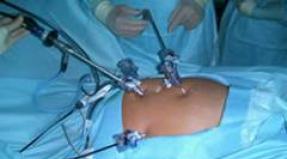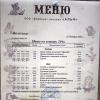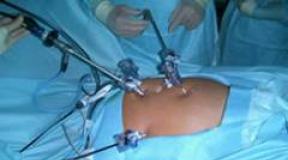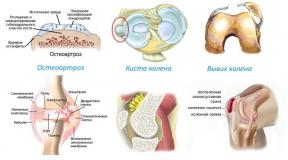Delicious and healthy breakfasts for schoolchildren. Quick and healthy breakfast for schoolchildren: recipes, ideas and tips. What to cook for your child for breakfast - simple healthy recipes
Three good protein foods for breakfast: egg, cheese, homemade liver pate
Some children don't have breakfast at home. Parents do not worry, because the child will eat at school. In addition, there are often “valid” reasons, such as difficulty waking up, constant turmoil in the morning.
Here is the menu of one of the good Moscow schools.

For breakfast, the child is offered to eat only carbohydrates (porridge, pie, pear). Cocoa also has sugar. Lunch looks better. For an active child with normal weight, such a menu is generally acceptable, although I cannot call it optimal. For an overweight child, eating a diet with excess carbohydrates(as in this menu) doesn't fit. After all, children sit at school and don’t need that amount of carbohydrates.
Therefore, if your child begins to gain weight, ask what the child eats at school. And you will see that the school canteen offers porridge, potatoes, and pasta. Children usually spend their pocket money on sweets, pies, and pizza. Therefore, you should not rely on school meals.
The child must have breakfast at home. Many mothers try to feed their children porridge, but there are more than enough carbohydrates in children’s diets. And here Children don't have enough protein. A child's body needs protein more than an adult. For an adult with a sedentary lifestyle, 60-70 g of protein per day will be enough.
A child 7-10 years old needs 77 g of protein per day. Boys aged 11-13 years need 90 g of protein per day, and at the age of 14-17 years - 98 g. For girls, the norm is slightly lower, at 11-13 years old - 82 g, at 14-17 years old - 90 g. Of these, 60 -70% animal protein.
And a 100 g serving of meat or chicken contains 20 g of protein, and a 100 g serving of cottage cheese contains about 16-20 g of protein. As you can see, in order to get the required 80-100 g of protein per day, a child must eat natural protein foods not only at lunch, but also for breakfast and dinner.
And this is not surprising. The processes of growth and development of the body occur with the participation of protein, and in order for a child to grow up, he needs not only porridge, but natural protein products.
Protein is found in cottage cheese, eggs, meat, chicken, fish, cheese, as well as legumes (beans, lentils, peas). And, as we can see, there are almost no these products on the school menu.
There is a simple explanation for this. Natural protein products are expensive. The second reason is that these products have a short shelf life, they require refrigerators, but cereals or pasta can be stored for years. There are very few legumes in Russia.
That's why A schoolchild's home breakfast should include protein products.
1. Breakfast with cottage cheese.
Buy natural cottage cheese without additives. You can add all the additives that will make the cottage cheese tasty. This could be a spoonful of honey and some nuts, jam, or in the summer - berries or fruits.
Instead of cottage cheese, you can make homemade ricotta (recipe).
Children do not need low-fat foods. If the cottage cheese has a low fat content of 4-5%, then add sour cream or cream.
You can make cottage cheese casserole, cheesecakes.
2. Egg breakfast.
It can be boiled eggs, fried eggs, omelet. Omelette with carrots - .
3. Breakfast with sandwiches.
In the Netherlands, where the tallest and slenderest Europeans live, breakfast is of great importance. In Dutch families, they eat sandwiches for breakfast, but one sandwich is healthy: whole grain bread with a piece of boiled cold meat, and the second is sweet, for example, with jam. Tasty, healthy and varied! So, let's take an example from the Dutch.
Instead of sausage, you can make a sandwich with homemade liver pate (recipe).
4. Breakfast with porridge.
Probably many have already realized that Breakfast with porridge is not the best option for a schoolchild.
Throw away all the instant cereals! They act on the body like sugar. Choose traditional porridges that cook for at least 10-15 minutes. You have known them since childhood - millet, buckwheat, rice, oatmeal.
If the child is of normal weight, then make it a rule add a piece of chicken or a couple of pieces of cheese to the porridge, you can give a boiled egg. But honey, fruits or dried fruits will be superfluous, because porridge is nothing more than a source of carbohydrates.
If the child is plump and begins to gain weight, then try to gradually switch to a breakfast of cottage cheese or eggs. And leave porridge or sandwiches no more than 1-2 times a week, or better yet, avoid them altogether.
Reading time: 8 minutes. Views 415 Published 08/24/2018
September is coming, caring moms and dads! And, of course, grandparents! Well, who else will prepare breakfast for your beloved child in the morning... When a child reaches school age, not only his life changes, but also the life of the whole family. Let's not consider global changes, let's talk about a small but very important nuance - breakfast. Recipes, tips, is breakfast really so important – that’s the topic of this article.
Do you need breakfast?
The child goes to school for half a day, at least for high school students - and even more. The student has a working day ahead, filled with both mental and physical stress. A lot of energy is consumed, and a growing body requires its replenishment. This is why breakfast is so important, because it is a reserve of strength and energy for the coming day.
Sleepy children often insist in the morning that “well, I don’t want to eat at all, well, not a bit!” It’s just that around the second lesson, your child will finally wake up, and his appetite will wake up along with him. This means that a bun will be bought at the school cafeteria. And this is in the best case, because there are still chips, crackers, sweet soda and other joys of fast food. On an empty stomach! Hello gastritis! And obesity to boot.
It is worth paying more attention to breakfast for another reason that this is the only meal until dinner that parents can control. Even if you give a schoolchild a sandwich with you, there is no guarantee that the child will eat it.
The food in the school canteen, unfortunately, is also not always tasty; the school lunch may remain untouched. And if a student has not eaten properly in the morning, there is a high probability that dinner will be the only full meal of the day. And for the developing gastrointestinal tract, this regime is detrimental.
Doctors have long been sounding the alarm about the spread of gastritis and even ulcers among schoolchildren. The percentage of overweight children is also increasing. Medical studies have found that among overweight children, almost half are not taught to eat a full breakfast. Therefore, a daily healthy breakfast should firmly become part of the student’s daily routine.
Breakfast rules for schoolchildren
Each family has its own rules, its own menu, each child has its own preferences. But there are several rules that will be useful to any student:
- breakfast should account for about 20% of the calorie content of the entire daily diet, it should be dense;
- do not allow your child to have breakfast in a hurry, set aside at least 15-20 minutes for breakfast, food swallowed in a hurry is of little benefit;
- diversify the menu so that the student receives adequate nutrition and eats with appetite;
- in the evening, think about what to cook so that in the morning rush you can cook quickly and tasty;
- Make the most of the capabilities of modern kitchen appliances: a food processor, microwave oven, multicooker can significantly ease your morning chores.
What foods to include in breakfast
- Milk and dairy products. This is a source of calcium needed by a growing body. But fermented milk products - yogurt, kefir, fermented baked milk - are best left for the evening.
- Porridge. Different cereals have different compositions, but they are always healthy “slow” carbohydrates, fiber, iron, vitamins A, B, D and others. Children don't really like porridge, but add fruit or milk, cook crumbly or liquid - in a word, find something that your child will like. And a piece of butter in the porridge won’t hurt either.
- Vegetables and fruits, preferably seasonal. It is fiber and a storehouse of vitamins. In addition, children enjoy eating fruits, and vegetables can be prepared exactly the way your student likes them. But – raw vegetables and fruits cannot be given on an empty stomach, so we give them either after cooking or after the main course.
- Eggs. A very nutritious dish, especially in the form of an omelette. Lecithin contained in yolks is necessary for the normal functioning of the liver, nervous system, and brain;
- Dried fruits, nuts, herbs, beans will make your breakfast richer, more varied and tastier.
You can wash down a healthy breakfast with sweet tea, cocoa, and freshly squeezed juice. It is better to exclude coffee from the student’s menu, as well as strong tea, especially in the lower grades.
What not to include in breakfast
Ready-made breakfast cereals make life easier for working moms. Filling cereal or chocolate balls with milk is simple, easy and quick, and kids love these dishes. The question is the benefits of such a diet. There are minimal nutrients in such breakfasts, but the sugar content is off the charts.
A study of more than 80 (!) brands of corn flakes showed a sugar content of 56%. In addition, such a breakfast will not be able to satisfy you for a long time; at most, by the third lesson the child will be hungry again.
The same can be said about instant porridges, which just need to be poured with boiling water to be ready. It is better to cook regular porridge and add fruit to it.
Most children love sweet glazed cottage cheese. As a dessert, you can pamper your beloved child. But you shouldn’t completely replace breakfast with curds or ready-made curd mass; just read the ingredients to be convinced of this.

Chips, crackers, popcorn, candy bars and other snacks should not appear on a student’s table in principle. As for sweets, they are only allowed as a snack in limited quantities.
Breakfast from the freezer
Naturally, making culinary delights in the morning is not part of the life of a working mother. Yes, and not working either. The best option is simple dishes that require a minimum of time and bring maximum benefits.
It is very convenient to use frozen meals that are prepared in advance and then wait in the refrigerator.
As an option:
- Dumplings with various fillings. Make ahead of time and freeze. In the morning, all you have to do is throw them into boiling water, add sour cream to the prepared dumplings - a delicious and satisfying breakfast is ready.
- Pancakes with different fillings. The pancakes are baked in advance, rolled into envelopes with filling and frozen. In the morning it is better to take them out in advance so that they defrost and fry them.
- Pancakes. They can be baked in advance, cooled and frozen. In the morning, just defrost them in the microwave. Or you can make the dough for pancakes in the evening and fry them in the morning. Children really like pancakes with fillings - grate an apple, banana, pear and simply add to the dough.
- Syrniki. They can be frozen fully prepared and simply defrosted for eating. Or you can mold it and freeze it raw. In the morning, take them out in advance to let them thaw slightly, and then fry them.
You can freeze a lot of dishes - both ready-made and semi-finished products. Think about what healthy foods your child would be willing to eat for breakfast, and use the freezing capabilities to the fullest.
Fast food recipes
You can diversify a student’s menu, even if you serve him the same dish. It's enough to just change the fillings. Here are some quick recipes.

Omelette with a surprise
- The number of eggs depends on the age of the child; one tablespoon is taken per egg. l. milk or sour cream, the mixture is well beaten and poured into the frying pan. Bake the omelette in the oven for 5-7 minutes.
- For the filling, boiled meat, tomato, cheese, and herbs are finely chopped. The filling is placed on half of the omelet, leveled and covered with the other half, then continue baking for 3-5 minutes.
- The fillings can be varied according to the child’s taste - for example, add pickled cucumber or boiled potatoes. Wishes can be the most unexpected, the main thing is that you eat with appetite.
Pita Burrito
Prepare the filling from finely chopped boiled meat, tomato, bell pepper, herbs, sour cream, grated cheese. Mix the ingredients, place on pita bread, roll into a roll and fry or bake in the oven.
Hot sandwiches
There are tons of options for the dish. You can cut the bread in the evening, put the filling on it - for example, a slice of tomato, a piece of sausage and grated cheese, and cover it with cling film so that the bread does not go stale. In the morning, a minute is enough to put the sandwiches in the oven or microwave.
And if you have 10-15 minutes, you can quickly beat the milk with the egg, dip the loaf pieces into it and fry them on both sides.
Muesli
If you really don’t have time, you can pour milk over the muesli or mix it with liquid cottage cheese. Muesli is a mixture of cereals, dried fruits, nuts, seeds and other tasty and healthy products.
Unlike breakfast cereals such as corn flakes, muesli is not heavily cooked. Therefore, they retain their beneficial properties, and practically no sugar is added to them. But you should have muesli for breakfast no more than 1-2 times a week.
Conclusion
In a family with working parents, there is always time pressure in the morning. But if you can find time to prepare healthy breakfasts, your child will be alert and energetic all day long. We hope that the breakfast recipes for which are given in the article will be useful to you.
What do you cook in the morning? Send interesting recipes! And bon appetit to you and your students!
During adolescence, growth processes are activated in the child’s body. During this period of life, significant changes occur in the functioning of the body, especially in the hormonal and emotional sphere. This is why it is so important that your teen gets enough calories and nutrients from food.
 For full development, it is very important to provide a teenager with a balanced diet.
For full development, it is very important to provide a teenager with a balanced diet.
Principles of healthy eating
- Meals should be regular, so it is important to organize a meal schedule that the teenager will follow every day.
- A teenager’s menu should be as varied as possible so that the child receives both essential and essential nutrients in the right quantities.
- At least 50-60% of proteins in a teenager’s daily diet should be represented by animal products.
- A teenager should get fats from vegetable oil, sour cream, nuts, cheese, butter and other products. It is desirable that about 70% of all fats consumed per day be vegetable.
- The child should receive carbohydrates in larger quantities than other nutrients. The optimal ratio of carbohydrates to proteins is 4 to 1.
- Sources of fast carbohydrates (sweet foods) should account for up to 20% of all carbohydrates consumed by a teenager.
- The child will receive complex carbohydrates from cereals, potato dishes, and bread. When preparing flour dishes, it is recommended to give preference to coarsely ground flour.
- Fish should be on a teenager’s menu at least 1-2 times a week. The same recommendations are given for red meat.
- Teens should eat 5 servings of fruits and vegetables every day. One serving is a medium-sized fruit (for example, an apple or an orange), two small fruits (for example, an apricot), 50 g of vegetable salad, a glass of freshly squeezed juice, three tablespoons of cooked vegetables.
- Dairy products should be on a teenager's menu daily in the form of three servings.
- A child can eat fatty and sweet foods in small quantities, but such dishes should not replace healthy foods, as they contain too few useful elements.
- The best types of heat treatment of foods are boiling and stewing, as well as baking.
- Foods with food additives, margarines, store-bought sauces, out-of-season vegetables, uncooked smoked sausages, very spicy foods, deep-fried foods, packaged juices, candies, fast food, and chewing gum are undesirable in the diet of teenagers. You should also limit your consumption of white bread and sugar.
 When creating a menu, you need to take into account the child’s lifestyle
When creating a menu, you need to take into account the child’s lifestyle
Teenager's food needs
A teenager should receive an adequate amount of calories to cover his energy expenditure during the day. On average, this is 65 kcal per kilogram of a child’s weight, which in general is about 2500-3000 kcal per day.
If the teenager’s physical activity is high, the daily amount of calories should be increased in accordance with energy expenditure during training.
As for nutrients, it is recommended that adolescent children receive 100-110 g of protein, 90-100 g of fat and an average of 400 g of carbohydrates daily.
What foods should make up the diet?
A teenager's daily food needs will be:
- Meat – approximately 200 grams;
- Cottage cheese - 60 grams;
- Dairy products – about 500 ml;
- 1 egg;
- Cheese – approximately 10-15 grams daily;
- Fish – from 60 to 70 grams;
- Sweets – up to 100 grams;
- Bread – from 300 to 400 grams (including rye bread in quantities up to 150 grams);
- Pasta or cereals - about 60 grams (replace legumes in the same quantity once a week);
- Vegetables - 300-350 grams;
- Fresh fruits – from 150 to 300 grams;
- Dried fruits – about 25 grams;
- Butter – from 30 to 40 grams;
- Vegetable oil – from 15 to 20 grams.
Read about vitamins for teenagers in another article. You will learn whether it is necessary to introduce additional vitamin complexes into the diet and what you should pay attention to at this age.
What you should pay attention to when creating a menu for a teenager, see the video of the Union of Pediatricians of Russia.
How to teach your child to eat healthy food?
The issue of proper nutrition in adolescence is both complex and simple. Parents are still able to influence the menu of their son or daughter, but the child’s food preferences in general have already been formed. In addition, the desire to be independent and do things your own way affects your diet. It is important to find a balance between nutritional control and violence against the individual.
In introducing a teenager to healthy eating, the example of parents is important. It is advisable that the whole family follows the principles of rational nutrition. When talking with your child, discuss the benefits of specific foods and the importance of certain foods for growth and health. Teach your teen about the importance of breakfast, the bad effects of fast food, skipping meals, and starvation diets.
Be sure to pay attention to your child’s nutrition at school. Encourage your teen to bring healthy alternatives to hot dogs and pizza from home. For example, let your son or daughter take yogurts, fruits, casseroles, and homemade cakes to class.
 Children develop food preferences over the years, so parents need to set a good example.
Children develop food preferences over the years, so parents need to set a good example.
Diet
Teenagers should eat at least 4 times a day. All meals are divided into:
- Breakfast. The child should receive about 25% of all calories in the morning meal.
- Dinner. This is the largest meal, accounting for 35 to 40% of daily calories.
- Afternoon snack. It is represented by a small snack, corresponding to approximately 15% of daily calories.
- Dinner. At the evening meal, the child is advised to eat 20 to 25% of the daily caloric needs. It is important that the teenager has dinner a maximum of 2 hours before he goes to bed.
What liquids should I give?
The total amount of fluid a teenager drinks per day will be determined by the child's diet, the teenager's activity level, and the weather. On a hot day or during physical activity, you should consume more water. On average, a teenager needs about 50 ml of fluid per kilogram of his weight every day.
The best drink for a teenager is plain water. Also in the diet of school-age children may be present drinks such as milk, compotes, jelly, rosehip infusion, dried fruit decoction, tea, cocoa.
Juice is considered a less preferred drink due to its high content of simple sugars and increased acidity. If a child drinks freshly squeezed juice, it must be diluted with water.
Teenagers should not drink carbonated drinks or drinks with high caffeine content. Caffeine interferes with iron absorption and may cause sleep problems. Drinks with gas do not quench thirst well and irritate the gastrointestinal tract, and often contain various chemical additives.
 The best drink for both adults and children is water.
The best drink for both adults and children is water.
How to create a menu?
When drawing up a daily menu for a teenager, you should take into account the child’s daily routine, in particular, the routine of attending school, sports clubs, tutors and other activities.
It’s better to create a menu for the whole week at once, then it will be more varied and nutritious. Consider these nuances:
- For breakfast, a teenager should receive an average of 300 g of the main dish, as well as a drink of approximately 200 ml. Milk porridge, cottage cheese dishes, omelet or scrambled eggs are considered good options for breakfast. Vegetables, dried fruits, berries, fruits, meat, and sauces are added to them.
- Many teenagers have lunch at school, receiving soup, a main course (usually including a side dish and meat or fish), and a drink. The home lunch menu follows the same principle. The child is given about 250 ml of the first course and about 100 g of vegetable salad. A teenager is offered a main dish in a volume of up to 300 grams, and a drink in a volume of 200 ml.
- For an afternoon snack, teenagers are recommended to consume dairy products, fruits, pastries and cookies. Approximate volumes of dishes are 100 g for baked goods, 100 g for fruit and 150-200 ml for a drink.
- At an evening meal, a teenage child is offered a main dish (about 300 g) and a drink (200 ml). A good choice would be low-fat protein dishes, such as cottage cheese casserole, egg or fish dishes. Porridge and vegetable dishes are also a good option for teenagers' dinners.
- Bread can be included in any meal by offering your child baked goods made from different types of flour.
 You can maintain an interest in healthy food by cooking together
You can maintain an interest in healthy food by cooking together
Example menu
 Nutrition should be varied, healthy and balanced
Nutrition should be varied, healthy and balanced
Possible problems
If parents are not interested in the child’s nutrition, due to a monotonous and nutrient-poor menu, the teenager may develop the following problems:
- Obesity.
- Bone fragility.
- Fast fatiguability.
- Reduced immunity.
- Joint diseases.
- Dizziness and low blood pressure.
- Problems with the menstrual cycle in girls.
- Caries.
- Exhaustion.
Excess weight
If a teenager’s BMI exceeds 25-30, you should pay attention to nutrition and adjust it. First of all, harmful foods are excluded from the child’s menu (chips, chocolate bars, fried foods, fast food,
What kind of breakfast should I prepare for my child? sending him to school? With the start of the new school year, all caring parents ask themselves this question. We simplify the task and give six simple, healthy and delicious recipes for your children.
“JUICY EXTRACTION”: SALAD FROM ALL SEASON FRUIT
Getting up in the morning won't be so difficult if you greet the new day with a fruit salad. By activating the production of the “joy hormone” in the child’s body, fruits will replenish vitamins and energy.
Ingredients:
- Grapes - 4-5 berries;
- Orange - a couple of slices, can be replaced with tangerine;
- Kiwi – 1 medium size piece;
- Banana – 1 medium-sized;
- Nectarine or peach – half of the fruit.
Cooking:
Wash and peel all fruits thoroughly. Remove seeds from grapes and cut into 2 parts. Carefully remove the skin from orange or tangerine slices and cut into large pieces. Cut the peach into thin slices and then in half. Add banana slices to the rest of the fruit.
The finished salad can be decorated with whipped cream, lightly sprinkled with powdered sugar. Cream can be replaced with low-fat sour cream, and powdered sugar with honey. This delicacy will be appreciated not only by first-graders, but also by older children.
Attention! For children with allergies, we prepare the salad without honey, and replace citrus fruits with permitted fruits..
SCHOOL BREAKFAST FOR GOURMET: FRAME EGGS “MORNING QUAIL”
For kids who like to have a good meal in the morning, we offer a recipe for gourmet scrambled eggs.

Ingredients:
- A teaspoon of butter for frying;
- Boiled chicken fillet or boiled sausage – 50 g;
- Tomato slice;
- Quail eggs - 3-4 pieces;
- Toasted bread – 1 slice.
Cooking:
Remove the crumb from a slice of bread, and fry the whole crust in butter on one side. Leave the frying pan for 3 minutes, preparing the filling for the “bread square”: finely chop the sausage or meat, and a slice of tomato into 6-8 pieces. After turning the bread over and slightly heating the frying pan, crack the quail eggs into the square of bread and place the filling between the yolks. In a couple of minutes, the delicious fried egg is ready!
"AMERICAN DANDY":USEFULHAMBURGER IS THE BEST BREAKFAST FOR A SCHOOLCHILDREN
A hamburger can be healthy if you cook it right.

Ingredients:
- One sandwich bun with sesame;
- Two slices of boiled chicken breast or thin beef cutlet;
- Slice of processed cheese;
- Beijing cabbage – 1 leaf;
- Homemade mayonnaise and ketchup;
- Tomato – 1-2 slices.
Cooking:
What are we doing? Lightly heat the bun in a water bath, cut it in half lengthwise. The first layer is as follows: on the bottom half of the bun we apply a sauce of one spoon of homemade mayonnaise and one spoon of homemade ketchup. Not the whole portion, but half a portion. The second layer is simple - processed cheese. Then - Chinese cabbage, chicken breast or cutlet, tomato slices. Pour the remaining sauce over your “masterpiece” and cover with the other half of the bun.
Voila, just a couple of minutes and your healthy hamburger is ready! Of course, don't make a milkshake for breakfast. Serve it better with good fresh tea for vigor.
“DON’T BE SAD – Crunch!” TOASTS WITH CRISPY CHEESE
How about frying cheese instead of bread for toast? Offer your smart kids a crispy school breakfast, they'll love it.

Ingredients:
- 2-3 slices of loaf or white bread;
- 2-3 slices of hard cheese (you can take “Gouda” or “Poshekhonsky”);
- A little butter for greasing the bread slices;
- Half a teaspoon of vegetable oil for frying cheese.
Cooking:
Spread the bread with butter, put cheese on top and fry the toast over medium heat, placing the bread cheese side down, until golden brown. As a filling for toast, you can use slices of lightly salted red fish or eggs. It would be good to serve toast with parsley, if, of course, your child eats greens.
“FAIRY-TALE CASKET”: APPLES WITH CHEESE CHEESE
Yours? Prepare this magical dish for him, and the baby will eat it on both cheeks!

Ingredients:
- A teaspoon of butter;
- Soft cottage cheese – 100-150 g;
- A couple of large, sweet apples;
- Sugar, ground cinnamon and vanilla sugar - to taste.
Cooking:
We remove the core from the apples, stuff them with cottage cheese, adding sugar to the filling to taste, and you can also add a little citrus zest. Place a piece of butter on top, sprinkle vanilla sugar and cinnamon on top. Cook in the microwave for about four minutes at a power of 650-700 W.
ZUCCHER PANCAKES WITH A SURPRISE: A HEARTY BREAKFAST FOR A SCHOOLCHILDREN
Traditional zucchini pancakes can be made into a heartier meal with the addition of just one ingredient: cooked sausage.

Ingredients:
- A couple of small zucchini;
- Chicken egg – 1 piece;
- About 4 tbsp. spoons of wheat flour;
- Boiled sausage – approximately 70 g;
- Vegetable oil for frying, salt to taste.
Cooking:
Grind the zucchini on a coarse grater, cut the sausage into eight thin slices. Add the egg and flour to the zucchini and add salt to taste. The consistency of the dough should be approximately like thick sour cream. Spoon the dough onto a hot frying pan, frying the pancakes on both sides. Place a slice of sausage on one of them.
You can add finely grated onion and finely chopped dill to the pancakes for flavor. Make a creative presentation: draw a face on each pancake using ketchup or sour cream. Your smart girl will definitely try this delicacy!
If you still haven’t decided what breakfast to prepare for your child, then try our simple and delicious recipes. Your schoolchild will appreciate the efforts of his beloved mother and eat the entire portion, praising the talents of the chef.
! Parental care is the key to a healthy and happy childhood. Monitor your child's diet so that he is always healthy and full of strength.
Read also...
- Quick and healthy breakfast for schoolchildren: recipes, ideas and tips
- Meaning of the name Charles Meaning of the letters of the name Charles
- Cheat sheet: Specifics of speech development disorders in young children The main stages of child speech development
- What does the name Vasily mean: characteristics, compatibility, character and fate



















